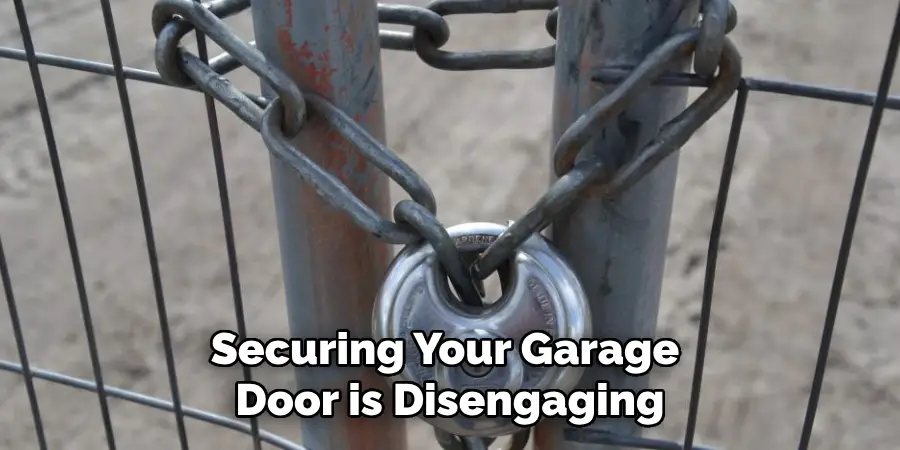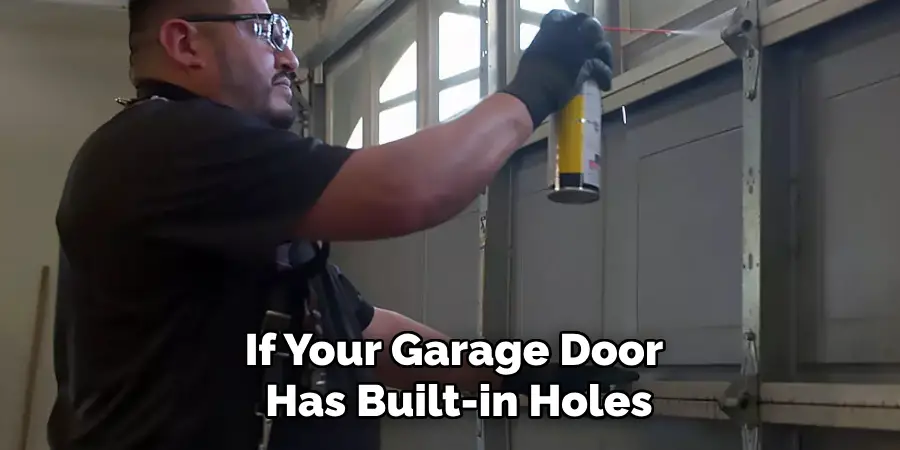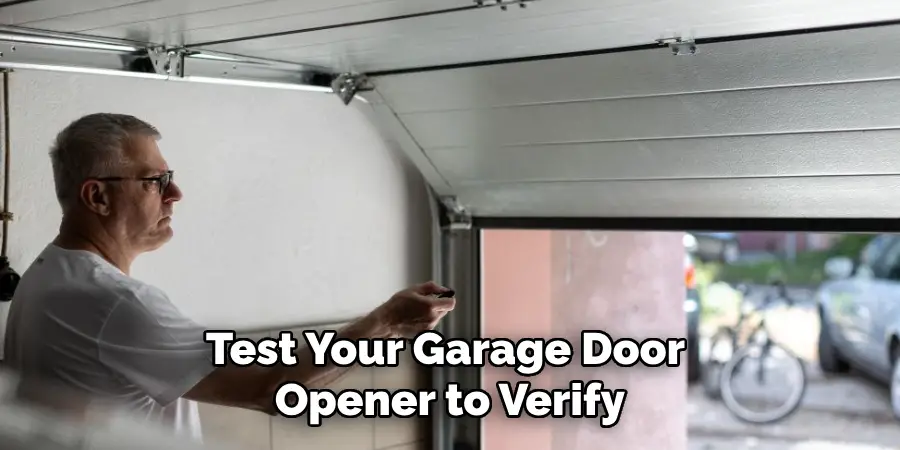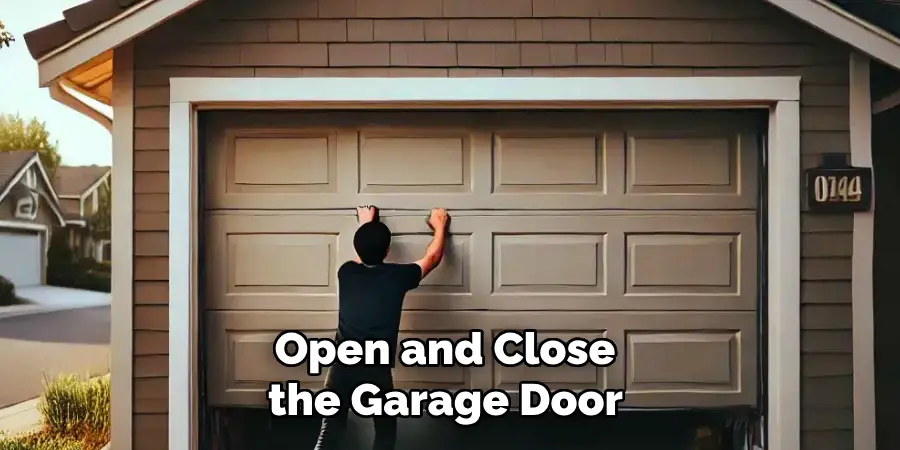Are you ever faced with a power outage and found yourself struggling to figure out how to secure your garage door? Don’t worry, you’re not alone.

In modern homes, automatic garage doors provide convenience and enhanced security; however, power outages can render these systems inoperative, raising concerns about securing your property. Knowing how to lock a garage door without power becomes vital under such circumstances to ensure continued safety and protection against unauthorized access. Fortunately, several methods allow homeowners to manually secure their garage doors effectively.
This guide will explore practical solutions and techniques to safeguard your garage and its contents during power outages, empowering you with the knowledge to maintain security without relying on electricity.
What Will You Need?
Before we delve into the different techniques for locking a garage door without power, gathering the necessary tools and materials is essential. These may vary depending on your specific garage door model and design; however, some general items you might need include:
- A ladder (if your garage door is high)
- C-clamps or vice grips
- Padlocks
- Zip ties
- Rope or bungee cords
- Hammer or mallet
It’s always a good idea to familiarize yourself with your garage door’s mechanism and components beforehand, as this will make it easier to navigate these emergencies.
10 Easy Steps on How to Lock a Garage Door Without Power
Step 1. Disengage the Automatic Opener:
The first step in manually securing your garage door is disengaging the automatic opener. This step is crucial because it allows you to shift the door from automatic to manual operation. To do this safely and efficiently, locate the emergency release cord, typically a red rope hanging from the automatic garage door opener track. This cord is designed to disconnect the garage door from the opener, giving you complete manual control over the door’s movement.

Firmly grasp the handle of the emergency release cord and pull it downwards. You should hear a click or feel the release as the trolley mechanism disconnects from the opener’s carriage. Ensure that you do this carefully to prevent any sudden movements of the garage door, as the door may be heavy and move unexpectedly. Once disengaged, you can now manually lift or lower the garage door as needed.
Step 2. Secure the Door in the Down Position:
Once you have manually controlled your garage door, you must ensure it is fully closed. Keeping the door fully lowered is crucial for security, as it prevents unauthorized entry and keeps the elements at bay. Gently lower the door until it reaches the ground, moving steadily to avoid any misalignment. If the door feels too heavy, enlist the help of another person to ensure safety.
With the door securely in the down position, you can now take measures to lock it in place. Using a C-clamp or vice grip, attach it to the metal track on each side of the door right above where the roller fits into the track. This will effectively prevent the door from being lifted from the outside. Ensure the clamps are tightly fastened to hold the door firmly in place.
Consider using a padlock on the inside track holes if available for added security. This simple but effective step will help maintain your garage’s security during a power outage.
Step 3. Reinforce the Door with Rope or Bungee Cords:
Consider reinforcing the garage door using rope or bungee cords to provide extra security, especially if you feel additional restraint is necessary. These materials are helpful in preventing the door from being lifted should any external force attempt to open it. Begin by threading a sturdy rope or bungee cord through the hole on the door’s track.
When secured, tie or hook the rope’s end to a fixed structure around your garage, such as an interior bracket or iron support. Ensure the rope or bungee cord is taut but not overly tight, which could damage the mechanism if the cord is suddenly tensioned. This method is an additional barrier, securing your garage door until power is restored.
Step 4. Install Padlocks on the Track:
Consider installing padlocks directly onto the tracks for a more lasting solution to securing your garage door. This step is particularly effective if your garage door has built-in holes or slots for locking purposes. To do this, locate these holes, which are typically found towards the bottom sections of the tracks where the rollers travel. Insert your padlock shackle through these holes, ensuring it passes through both sides of the track for maximum security.

Once inserted, close and lock the padlock securely. This prevents the rollers from moving past the lock, making it nearly impossible to lift the door from the outside manually. By integrating padlocks into your garage security strategy, you gain a layer of protection, safeguarding your home against intrusion until your automatic opener is functional again.
Step 5. Use Zip Ties for Added Security:
Zip ties can offer additional security for your garage door during a power outage. They are instrumental when you want a temporary solution that adds resistance against attempts to open the door. Start by threading a durable zip tie through the holes in the garage door track, similar to the method used with padlocks.
Secure the zip tie firmly in place, ensuring it is tight enough to offer resistance without hindering the natural function of the door when power returns. Zip ties are relatively inexpensive and easy to replace, making them a practical choice for reinforcing your garage door’s security.
Step 6. Engage the Manual Lock:
If your garage door is equipped with a manual lock, this can serve as another effective means of securing the door during a power outage. Often located inside the door, these locks use sliding bars that fit into slots or holes in the door’s track or frame. To engage the manual lock, ensure the door is fully in the down position. Then, slide the bar or bars into their locking slots to prevent any movement.
This traditional locking method is straightforward yet highly effective, providing a secure barrier against unwanted entry. Utilizing the manual lock is especially advantageous if you anticipate an extended period without power, as it offers a simple and reliable way to maintain security without relying on additional tools or materials.
Step 7. Prepare for Reconnecting the Automatic Opener:
Once power is restored, you’ll likely want to re-engage your garage door’s automatic opener for convenience. Before doing so, ensure that all temporary security measures, such as clamps, ropes, or locks used on the door, have been removed. This will allow the opener to function smoothly without obstruction. Next, manually lift the garage door until it’s fully open to make the reattachment process easier.
Find the emergency release cord handle and gently pull it toward the garage opening—this action should reset the trolley mechanism that connects to the opener carriage. With these steps completed, test your garage door opener to verify its functioning as expected.

Step 8. Test the Re-engaged Automatic Opener:
After reconnecting your garage door’s automatic opener, it’s essential to perform a test to ensure everything is working correctly. Start by standing clear of the door and using the remote or wall button to open and close the garage door. Observe the door’s movement, checking for smooth operation and listening for any unusual noises that might indicate a misalignment or mechanical issue.
Ensure that the door fully opens and closes without hesitation and that the safety sensors and reverse mechanism are functional. If any problems are detected, consult the garage door opener’s manual for troubleshooting tips or seek professional assistance.
Step 9. Conduct Regular Maintenance Checks:
Regular maintenance checks are essential to ensure the longevity and reliability of your garage door system. For any signs of wear or damage, begin by visually inspecting the door’s components, such as springs, cables, rollers, and tracks. Lubricate moving parts with a suitable garage door lubricant to prevent friction and ensure smooth operation. Test the door’s balance by disconnecting the automatic opener and lifting the door manually;
it should stay open about halfway without assistance. Check the opener’s force setting to ensure it stops or reverses when meeting an obstruction. Additionally, clean the photo-eye sensors and verify that they are aligned correctly to maintain the effectiveness of safety features.
Step 10. Ensure Emergency Release Functionality:
Understanding how to use your garage door’s emergency release mechanism is crucial for situations where the automatic opener is not functioning, such as during power outages or mechanical failures. This mechanism allows you to open and close the garage door with ease manually. To ensure it works properly, identify the emergency release cord, typically a red handle hanging from the door’s trolley. Test its functionality by pulling the handle downward, which should disengage the trolley from the opener carriage.
By following these steps, you can effectively secure your garage door during a power outage and protect your home from potential intruders.

Conclusion
How to lock a garage door without power involves a combination of practical techniques and strategic preparation to ensure the safety and security of your home.
By employing methods such as padlocks, zip ties, and engaging the manual lock, you can effectively prevent unauthorized access to your garage during a power outage. It’s essential to familiarize yourself with these steps, ensuring quick and efficient execution when needed. Regular maintenance and checks of garage door components further enhance security, promoting long-term durability and functionality.
Overall, being proactive in securing your garage without relying on power underscores the importance of preparedness in safeguarding your home.
